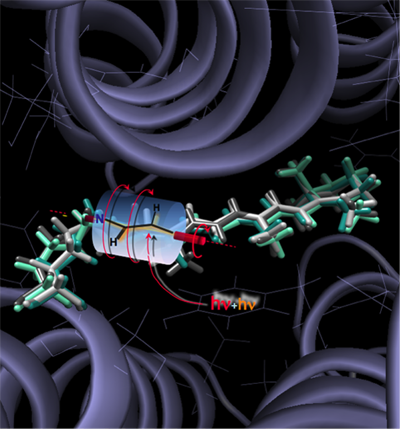Ohio Supercomputer Center powers computer simulations of cyanobacteria
Columbus, Ohio (Jan. 25, 2012) – Blue-green algae is causing havoc in Midwestern lakes saturated with agricultural run-off, but researchers in a northwest Ohio lab are using supercomputers to study a closely related strain of the toxic cyanobacteria to harness its beneficial properties.
 |
| Massimo Olivucci |
Massimo Olivucci, Ph.D., a research professor of chemistry at Bowling Green State University (BGSU), is focusing on Anabaena sensory rhodopsin (ASR) bacteria, which has served as a model for studies of most cyanobacteria since its genome was fully mapped in 1999.
“An in-depth understanding of light sensing, harvesting and energy conversion in Anabaena may allow us to engineer this and related organisms to thrive in diverse illumination conditions,” said Olivucci. “Such new properties would contribute to the field of alternative energy via the microbial conversion of light energy into biomasses, oxygen and hydrogen. Biophysical studies of the bacterial photoreceptor and its underlying molecular mechanisms can help us to understand its biotechnological potentials and the associated environmental implications.”
Using sunlight as an energy source, a sensory protein within ASR detects light of two different colors and behaves like the “eye” of Anabaena, using its green-light sensitivity to activate a cascade of reactions. In sophisticated computer simulations Olivucci created at the Ohio Supercomputer Center (OSC), he found that a short fragment of the long retinal chromophore backbone of ASR undergoes a complete clockwise rotation powered by the energy carried by two photons of light.
“We are constructing quantum-mechanical and molecular-mechanical models on Ohio Supercomputer Center systems,” Olivucci explained. “Past simulations have revealed that light induces a molecular-level rotary motion in the protein interior.
“Now, the same computer models will be used to engineer hundreds of mutants that display programmed spectroscopic, photochemical and photobiological properties and identify which mutants should be prepared in the laboratory. This new approach constitutes a unique opportunity for developing computational tools useful for understanding the molecular factors that control the spectra of proteins and their photo-responsive properties in general.”
Olivucci’s research is expected lead to an unprecedented tool by which hundreds to thousands of mutant models can be screened for wanted properties, such as color, excited state lifetime or photochemical transformations. This will provide tailored genetic materials for generating organisms that, for instance, can thrive under alternative light conditions and modulate biomass production or be used in engineering applications.
“Ohio is an international player in the biosciences and energy/environmental issues, which is why OSC focuses many of its resources and services on those areas to support important research like this cyanobacteria study,” said Ashok Krishnamurthy, Ph.D., interim co-executive director of OSC. “Dr. Olivucci’s computational investigations into the potential uses of Anabaena are a great example of how modeling, simulation and analysis can advance research into subjects only imagined just a few short years ago.”
The Ohio Supercomputer Center (OSC), a member of the Ohio Technology Consortium of the Ohio Board of Regents, addresses the rising computational demands of academic and industrial research communities by providing a robust shared infrastructure and proven expertise in advanced modeling, simulation and analysis. OSC empowers scientists with the vital resources essential to make extraordinary discoveries and innovations, partners with businesses and industry to leverage computational science as a competitive force in the global knowledge economy, and leads efforts to equip the workforce with the key technology skills required to secure 21st century jobs. For more, visit www.osc.edu.
The Laboratory for Computational Photochemistry & Photobiology (LCPP) was created in 2006 on the basis of generous funding provided from the Department of Chemistry, the Graduate College and the College of Arts & Sciences at Bowling Green State University. The mission of the laboratory is the development and application of state-of-the-art computational protocols for the simulation of photophysical and photochemical processes. For more, visit www.bgsu.edu/departments/chem/LCPP.html.
